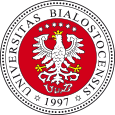Seminarium wydziałowe (online)
Dnia 2021.11.30 o godzinie 14.15, odbędzie się wykład (seminarium odbędzie się „online” z wykorzystaniem platformy ZOOM) Wydziału Fizyki na którym mgr VIŠNJA BABAČIĆ, z Wydziału Fizyki Uniwersytetu Adama Mickiewicza w Poznaniu wygłosi wykład pt.:
„Evaluation of elastic properties of nanomaterials by Brillouin light scattering”
Serdecznie zapraszamy
Andrzej Maziewski
Jerzy Przeszowski
VIŠNJA BABAČIĆ
ADAM MICKIEWICZ UNIVERSITY
Evaluation of elastic properties of nanomaterials by Brillouin light scattering
The talk is devoted to the mechanical properties of functional nanomaterials of different levels of spatial confinement: thin nanocomposite coatings, ultrathin membranes, and colloidal crystals. Brillouin light scattering (BLS) was employed to investigate the effect of such parameters as stoichiometry, nanoconfinement (size effect), or high-pressure environment on the mechanical features of the nanomaterials. For the case of thin nanocomposite coatings, the influence of Ta% content was investigated in the mechanical response of the Ta-Hf-C 3D nanocomposites supported by silicon.[1] The results revealed a higher Young modulus for ternary alloys (TaC)x(HfC)y than that of binary TaC or HfC. The elastic size effect in 2D membranes is presented on the example of a MoSe2.[2] To address the elastic size effect in vdW materials, micro-BLS measurements for bulk and MoSe2 membranes of different thicknesses were performed. Experimental results have revealed about 30% elastic softening of MoSe2, while decreasing thickness from bulk to two layers. Finally, uniform mechanical reinforcement of 3D polystyrene colloidal crystals employing supercritical nitrogen and argon is presented.[3] This method is a synergistic combination of nanoscale plasticization of particles’ surface and compressive hydrostatic pressure. It results in permanent physical bonds forming between the particles while maintaining their shape and periodic arrangement of the colloidal crystal. This process is named “cold soldering” as it is possible close to room temperature. Brillouin light scattering allowed the determination of preferential pressure, temperature, and time ranges for soldering.
Overall, the results show that BLS is a powerful tool that allows the mechanical characterization of various nanosystems in a contactless and non-destructive manner. Moreover, this technique allows for the investigation of novel effects, such as mechanical softening of 2D materials and gas pressure-induced plasticization of polymer nanostructures.
References:
[1] E. Coy, V. Babacic, L. Yate, K. Załęski, Y. Kim, J. Sebastián Reparaz, B. Dörling, B. Graczykowski, I. Iatsunskyi, K. Siuzdak, Chemical Engineering Journal 2021, 415, 128987.
[2] V. Babacic, D. Saleta Reig, S. Varghese, T. Vasileiadis, E. Coy, K. Tielrooij, B. Graczykowski, Adv. Mater. 2021, 33, 2008614.
[3] V. Babacic, J. Varghese, E. Coy, E. Kang, M. Pochylski, J. Gapinski, G. Fytas, B. Graczykowski, Journal of Colloid and Interface Science 2020, 579, 786.
